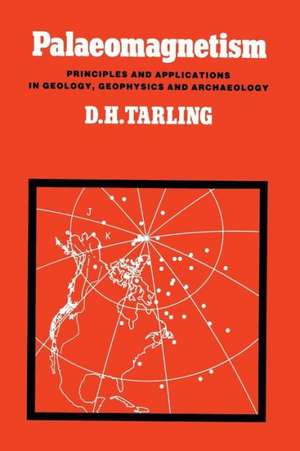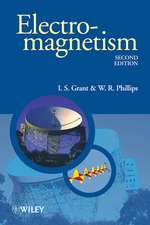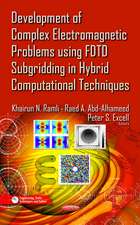Palaeomagnetism: Principles and Applications in Geology, Geophysics and Archaeology
Autor Donald H. Tarlingen Limba Engleză Paperback – 8 oct 2011
Preț: 393.74 lei
Nou
Puncte Express: 591
Preț estimativ în valută:
75.35€ • 77.84$ • 62.71£
75.35€ • 77.84$ • 62.71£
Carte tipărită la comandă
Livrare economică 26 martie-09 aprilie
Preluare comenzi: 021 569.72.76
Specificații
ISBN-13: 9789400959576
ISBN-10: 9400959575
Pagini: 392
Ilustrații: X, 380 p.
Dimensiuni: 155 x 235 x 21 mm
Greutate: 0.55 kg
Ediția:Softcover reprint of the original 1st ed. 1983
Editura: SPRINGER NETHERLANDS
Colecția Springer
Locul publicării:Dordrecht, Netherlands
ISBN-10: 9400959575
Pagini: 392
Ilustrații: X, 380 p.
Dimensiuni: 155 x 235 x 21 mm
Greutate: 0.55 kg
Ediția:Softcover reprint of the original 1st ed. 1983
Editura: SPRINGER NETHERLANDS
Colecția Springer
Locul publicării:Dordrecht, Netherlands
Public țintă
ResearchCuprins
1 Introduction.- 1.1 Scope of the book.- 1.2 Historical perspective.- 1.3 Data presentation, magnetic units and geological ages.- 2 The physical basis.- 2.1 Magnetization on an atomic scale.- 2.2 Magnetic domains and anisotropy.- 2.3 Temperature, grain size and time.- 3 Magnetic mineralogy and magnetic identification of minerals.- 3.1 Introduction.- 3.2 Magnetic minerals.- 3.3 Identification of magnetic minerals.- 4 The magnetization of natural materials.- 4.1 Introduction.- 4.2 Igneous rocks.- 4.3 Unconsolidated sediments and sedimentary rocks.- 4.4 Metamorphic rocks.- 4.5 Archaeological materials.- 4.6 Secondary magnetizations.- 4.7 Magnetic inhomogeneity and anisotropy.- 4.8 Summary.- 5 Sampling, measurement and procedures.- 5.1 Introduction.- 5.2 Sampling and orientation.- 5.3 Measurements of remanence, low-field susceptibility and anisotropy.- 5.4 The stability of remanence.- 5.5 The age of the remanence.- 5.6 Palaeointensities.- 5.7 Summary.- 6 Statistical and mathematical analyses.- 6.1 Introduction.- 6.2 Intensity of remanence and susceptibility.- 6.3 Directional analyses.- 6.4 Analyses of vector components and their stability.- 6.5 Levels of direction analyses and sampling numbers.- 6.6 Magnetic fabric.- 7 Archaeological applications.- 7.1 Introduction.- 7.2 Archaeomagnetic dating.- 7.3 Other applications.- 8 Geomagnetic applications.- 8.1 Introduction.- 8.2 The present geomagnetic field and historical observations.- 8.3 Secular variations and the drift of the non-dipole field.- 8.4 Polarity reversals, transitions and excursions.- 8.5 The general nature of the geomagnetic field.- 9 Geological applications.- 9.1 Introduction.- 9.2 Magnetic dating.- 9.3 Magnetic fabric.- 9.4 Sedimentological applications.- 9.5 Igneous and metamorphic rocks.- 9.6 Structural applications.- 9.7 Biological, weather, climatic, palaeontological and palaeogeographic aspects.- 9.8 Extraterrestrial studies.














